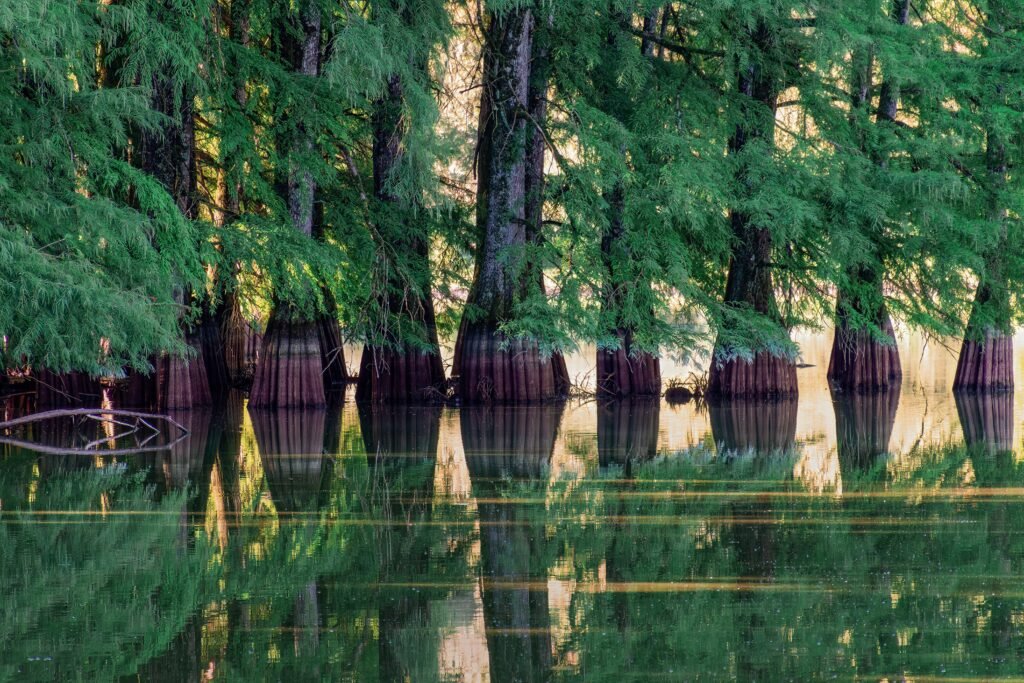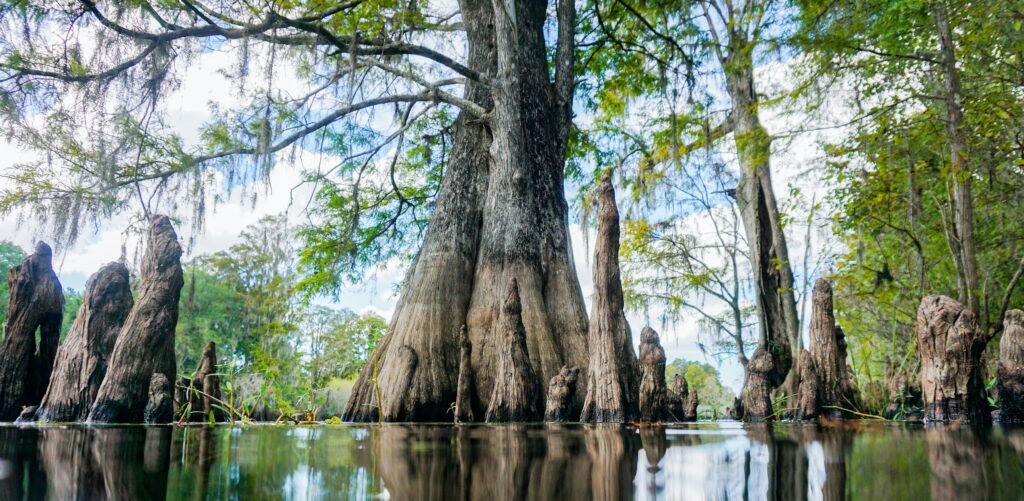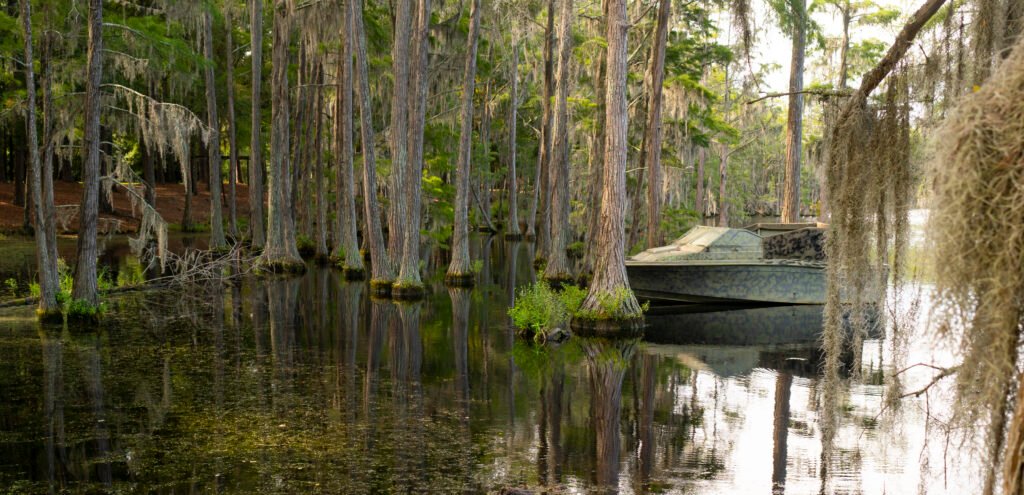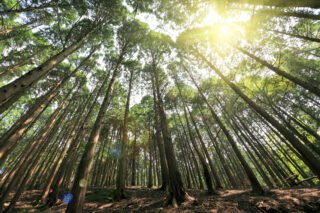Table of Contents
- The Majestic Bald Cypress: A Louisiana Icon
- The Resilience of the Bald Cypress in Flooding
- Spanish Moss and Cypress Knees: Unique Characteristics
- The Efforts to Preserve and Protect Louisiana’s State Tree
- The Louisiana State Tree: A Symbol for Future Generations
- FAQ
- Q: What is the Louisiana Live Oak Society?
- Q: How many live oak trees has Coleen Perilloux Landry registered?
- Q: What is the goal of the Louisiana Live Oak Society?
- Q: What did Coleen Perilloux Landry do to protect trees from being cut down?
- Q: How has Coleen Perilloux Landry been involved in teaching about tree care and preservation?
- Q: What is the goal of the Louisiana Live Oak Society?
- Source Links
Louisiana’s state tree represents the magnificent natural splendor that is found throughout the state. This iconic tree, the Bald Cypress, holds great significance as a symbol of beauty in the Bayou State. With its majestic presence and unique characteristics, the bald cypress has captured the hearts of Louisianans and visitors alike.
The Majestic Bald Cypress: A Louisiana Icon
The majestic bald cypress stands tall as a cherished icon of Louisiana’s natural landscape. With its towering height and distinctive features, this magnificent tree has become synonymous with the state’s identity.
Native to the swamps and bayous of Louisiana, the bald cypress is renowned for its adaptability and resilience. Its ability to thrive in the waterlogged environment is a testament to its unique characteristics.
One of the most remarkable features of the bald cypress is its buttressed trunk. These flared extensions at the base of the tree provide stability in the swampy terrain and allow the tree to withstand strong winds and flooding. Additionally, the cypress knees, which are woody projections that emerge from the roots, aid in providing oxygen to the tree’s submerged roots.
| Distinctive Features of the Bald Cypress | Description |
|---|---|
| Buttressed Trunk | Provides stability in swampy terrain and supports the tree against strong winds. |
| Cypress Knees | Woody projections that aid in providing oxygen to the submerged roots. |
| Spanish Moss | Epiphytic plant that hangs from the branches, adding a touch of ethereal beauty to the tree. |
As I delve deeper into the world of Louisiana’s iconic bald cypress, I am fascinated by its ability to adapt and survive in such harsh conditions. It serves as a reminder of the resilience and beauty that can be found in nature.

The Resilience of the Bald Cypress in Flooding
Despite the frequent flooding in Louisiana, the bald cypress exhibits remarkable resilience, making it a fitting state tree. This majestic tree has evolved to thrive in the swampy, waterlogged environment of the Bayou State, and its ability to withstand and even benefit from floodwaters is truly remarkable.
One of the key adaptations of the bald cypress is its ability to create “knees” that protrude from the water. These cypress knees act as stabilizers, providing support and anchoring the tree in the soft, muddy soil. They also help the tree to access oxygen by allowing the root system to extend above the water level, ensuring its survival even during prolonged periods of flooding.
Another unique feature of the bald cypress is its association with Spanish moss. This epiphytic plant drapes from the branches of the tree, creating a hauntingly beautiful sight in Louisiana’s wetlands. While it may appear as an aesthetic addition, Spanish moss actually plays a vital role in the tree’s ecosystem. It acts as a sponge, absorbing and retaining water during heavy rains, thereby reducing water pressure on the cypress and preventing damage.
The adaptability of the bald cypress to flooding is not only crucial for its own survival but also has broader ecological implications. The tree provides an important habitat for various species of birds, insects, and aquatic life, contributing to the overall biodiversity of Louisiana’s wetlands. Additionally, the extensive root system of the bald cypress helps to stabilize the soil, preventing erosion and protecting against the devastating effects of hurricanes and storm surges.
Spanish Moss and Cypress Knees: Unique Characteristics
The enchanting Spanish moss draping from the branches and the peculiar cypress knees protruding from the water make the bald cypress truly stand out. These unique characteristics contribute to the tree’s allure and play a vital role in its ecosystem.
Spanish moss, also known as Tillandsia usneoides, is an epiphytic plant that hangs gracefully from the branches of the bald cypress. It creates a stunning visual spectacle, with its long, silvery-gray strands swaying in the breeze. While it may appear delicate, Spanish moss is a hardy plant that thrives in the Louisiana humidity. It serves as a natural habitat for various creatures, including insects, spiders, and even small birds that build their nests within its protective embrace.
Another fascinating feature of the bald cypress tree is the presence of cypress knees. These curious structures are root projections that emerge from the ground, surrounding the tree like a forest of spiky knees. The exact purpose of cypress knees is still a subject of scientific debate, but researchers believe they play a role in stabilizing the tree in the swampy environment, providing additional support and improving oxygen flow to the tree’s roots. Additionally, cypress knees offer sanctuary to a diverse array of wildlife, from snakes and turtles to small mammals.
The Spanish moss and cypress knees are not just unique characteristics of the bald cypress tree; they are vital components of an intricate ecosystem that thrives in the humid Louisiana environment. These natural wonders serve as a reminder of the tree’s resilience and adaptability, making the bald cypress an iconic symbol of Louisiana’s natural splendor.

The Efforts to Preserve and Protect Louisiana’s State Tree
Recognizing the importance of preserving this natural treasure, dedicated individuals and organizations have stepped up to protect the Louisiana state tree. One such organization is the Louisiana Live Oak Society, an esteemed group committed to the preservation of the state’s live oak trees. Led by chairman Coleen Perilloux Landry, the society has made remarkable strides in safeguarding these majestic giants.
Landry’s passion for tree preservation shines through in her impressive accomplishment of registering over 3,000 live oak trees. Her unwavering commitment to saving trees from being cut down was exemplified in her efforts to rescue an ancient oak named Old Dickory from being bulldozed. This inspiring act showcases the profound impact that individuals can have in protecting the natural beauty of their surroundings.
Furthermore, Landry has been actively involved in educating others about the care and preservation of trees. The annual “tree school” workshop, organized by the Jefferson Parish, is a testament to her dedication. Through this initiative, Landry imparts her knowledge and expertise to interested individuals, fostering a deep appreciation for the significance of preserving these ancient live oaks for future generations.
Preserving a Legacy for the Future
The preservation and protection of the Louisiana state tree extend beyond the efforts of individuals like Landry. It is a collective mission shared by communities and organizations throughout the state. The goal is to secure a thriving ecosystem that not only sustains the beautiful bald cypress but also ensures the legacy of this natural wonder for generations to come.
| Organization | Mission |
|---|---|
| Louisiana Live Oak Society | To preserve the state’s live oak trees through education and advocacy. |
| Jefferson Parish | To promote tree education and preservation through workshops and community outreach programs. |
| Coleen Perilloux Landry | To register and protect thousands of live oak trees and inspire others to appreciate the value of tree preservation. |
Together, these efforts ensure that the majestic bald cypress remains an iconic symbol of Louisiana’s natural splendor. By educating and engaging communities, fostering understanding and appreciation, and actively preserving the state tree, we can guarantee a vibrant and thriving environment that will be cherished by future generations.

The Louisiana State Tree: A Symbol for Future Generations
The Louisiana state tree serves as a poignant symbol that reminds us to safeguard our natural heritage for the benefit of future generations. The majestic bald cypress, with its awe-inspiring presence, represents the resilience and beauty of Louisiana’s bayous. As a state icon, it holds a special place in the hearts of Louisianians and stands as a testament to our commitment to preserving the environment for years to come.
One organization leading the charge in tree preservation is the Louisiana Live Oak Society. Under the dedicated leadership of chairman Coleen Perilloux Landry, the society has registered over 3,000 live oak trees, ensuring their protection and conservation. Landry’s tireless efforts have not only saved individual trees, such as the beloved Old Dickory, from destruction, but have also promoted the appreciation and care of these ancient giants through initiatives like the annual “tree school” workshop in Jefferson Parish.
By emphasizing the importance of preserving the bald cypress and other tree species, Landry and the Louisiana Live Oak Society are playing a vital role in educating and inspiring future generations. The trees that grace our landscapes today hold not only historical and cultural significance but also provide vital ecological benefits. They help purify our air, provide habitat for diverse wildlife, and mitigate the impacts of climate change.
As we look to the future, it is crucial that we continue to support organizations like the Louisiana Live Oak Society and individuals like Coleen Perilloux Landry in their mission to protect our natural heritage. By doing so, we ensure that our children and grandchildren have the opportunity to marvel at the magnificence of the bald cypress, to walk among the ancient live oaks, and to understand the importance of valuing and preserving the wonders of nature.
FAQ
Q: What is the Louisiana Live Oak Society?
A: The Louisiana Live Oak Society is an organization dedicated to preserving the state’s live oak trees.
Q: How many live oak trees has Coleen Perilloux Landry registered?
A: Coleen Perilloux Landry has registered over 3,000 live oak trees.
Q: What is the goal of the Louisiana Live Oak Society?
A: The society promotes the appreciation and preservation of the southern live oak, which is the state tree of Louisiana.
Q: What did Coleen Perilloux Landry do to protect trees from being cut down?
A: Coleen Perilloux Landry has fought tirelessly to protect trees, including saving an old oak tree named Old Dickory from being bulldozed.
Q: How has Coleen Perilloux Landry been involved in teaching about tree care and preservation?
A: Coleen Perilloux Landry has been involved in teaching about tree care and preservation through Jefferson Parish’s annual “tree school” workshop.
Q: What is the goal of the Louisiana Live Oak Society?
A: The goal of the society is to preserve the ancient live oaks in Louisiana for future generations.







